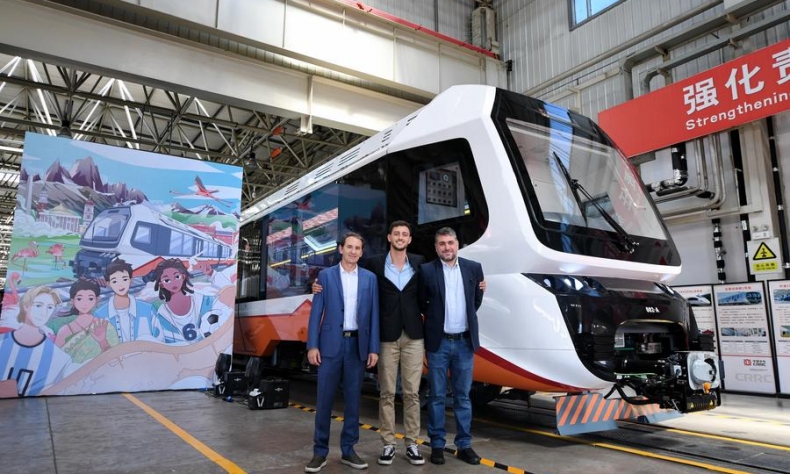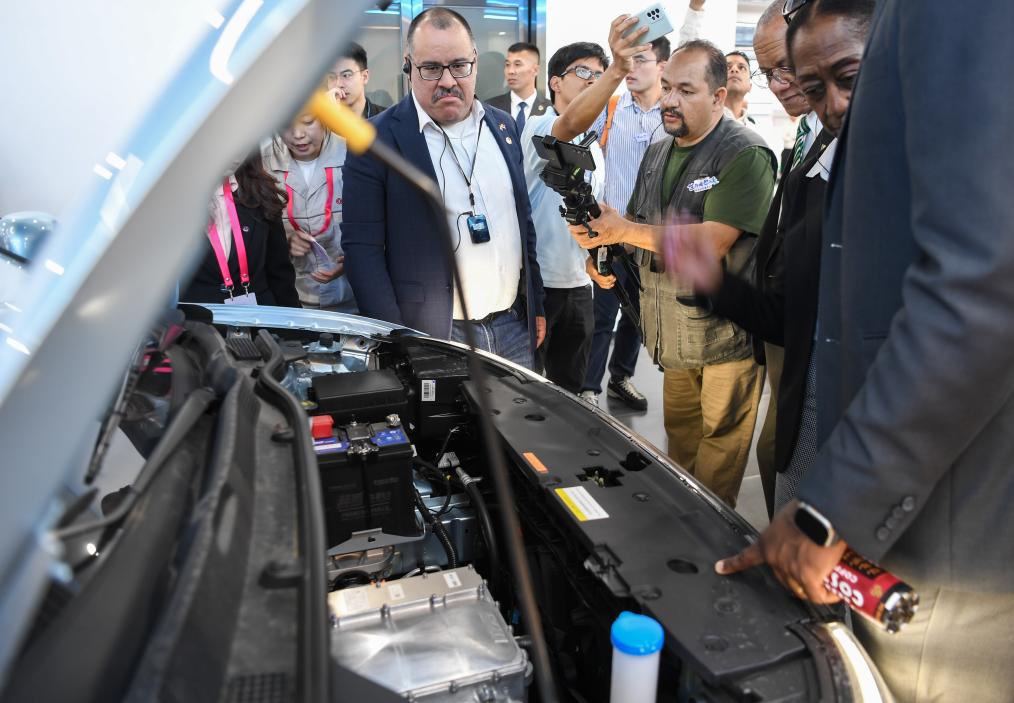Making the Partnership Stronger

The current context can be an accelerator that prompts us to position ourselves as a civilization of the Global South, demanding to be recognized in the global community and to have a voice, vote and participation in decision-making. China is showing that this is an attainable goal.
In a recent interview with China Hoy, a Spanish-language monthly magazine, Karina Batthyány, Executive Director of the Latin American Council of Social Sciences and professor and researcher in the Faculty of Social Sciences at the University of the Republic in Uruguay, shared her insights on the various aspects of the China-Latin America and the Caribbean (LAC) relationship. Edited excerpts of the conversation follow:
China Hoy: How do you view the current global environment and the role that LAC countries or the region as a whole play in this context?
Karina Batthyány: The current situation is that the relationship between global powers that defined the world as unipolar after the Cold War has undergone a transformation. The emerging new powers mainly come from the developing world and they are vying for space with a “collective West” in areas such as the economy, international finance, technology and development initiatives. For decades, this “collective West” has considered these developing countries to be its quasi-exclusive area of influence.
In the case of the LAC region, this global situation has had contradictory effects. On the one hand, pressure and threats have been made aimed at reversing the advance of powers such as China in a region that the United States considers its backyard and in which Europe has been relegated to third place. On the other hand, it has fostered a diversification of commercial partners and global interlocutors, given access to other sources of financing for development and has opened up participation in financial institutions that operate under non-Western logics in terms of political conditions.
China has become the second largest trading partner of the LAC region as a whole and the main trading partner of countries including Brazil, Chile and Peru. However, this economic cooperation does not seem to be balanced. Why?
All the advances you mention represent a great step forward in terms of relations between China and the LAC region, with a positive balance in terms of politics, economy, culture and people-to-people exchange. Certainly, the growth of trade is unquestionable, but this has not translated into a change in the structure of LAC exports. If we evaluate the trade issue from a quantitative perspective, it is a total success. According to data from the Economic Commission for Latin America and the Caribbean (ECLAC), trade between LAC countries and China, which in 2000 amounted to slightly more than $14 billion, sat close to $500 billion in 2022, having increased 35 times in value. But if we consider it in detail, we find some aspects that can be improved.

The first is that what the region exports to China consist almost entirely of raw materials and products based on natural resources, while its imports from China are almost entirely made up of manufactured goods.
The second aspect I want to refer to is the geographical distribution of this trade, which is concentrated in certain countries. Between 2000 and 2022, 93 percent of the LAC region’s exports to China came from South America, with Brazil, Chile and Peru accounting for 82 percent of shipments, according to the ECLAC. This is logically related to the size of these economies and the fact that they are rich in the resources that are of greatest interest to China. In contrast, only 1 percent of these exports came from Central America and the Caribbean.
LAC was one of the first developing regions to begin a modernization process. How can China and LAC countries, through exchange and sharing of related experience, achieve common progress together?
Modernization was carried out in a context of differing domestic policies in LAC countries and China, and, logically, the results of their efforts have been different. Among these different results, it should be stressed that, in China, modernization is inclusive, while in LAC it has exacerbated social stratification, with an increase in poverty and low-quality informal jobs and a reprimarization of the region’s economies.
LAC countries urgently need to rethink modernization and the role of the state. They should also expand the creation of high-quality employment opportunities and advance openness based on new codes of inclusiveness, participation and social supervision to ensure high-quality investment, just as China has done, placing the prosperity of its citizens and economic, political, social and environmental sustainability at the center of its development policies.
How can both sides promote the innovative development of their traditional cultures in the pursuit of modernization?
China has shown us that it is possible to modernize while preserving the wisdom of its ancestors. LAC countries treasure the historical-cultural legacy of their indigenous peoples, and of the African, European and Asian cultures that have been integrated into what we could call “our American” civilization, a concept that perhaps we have not internalized in all its dimensions. The current context can be an accelerator that prompts us to position ourselves as a civilization of the Global South, demanding to be recognized in the global community and to have a voice, vote and participation in decision-making. China is showing that this is an attainable goal.
The concept—a community with a shared future for humanity promoted by China—is a contribution to a new form of coexistence of civilizations and outlines the contours of an ideal of more friendly global governance.
 Facebook
Facebook
 Twitter
Twitter
 Linkedin
Linkedin
 Google +
Google +










